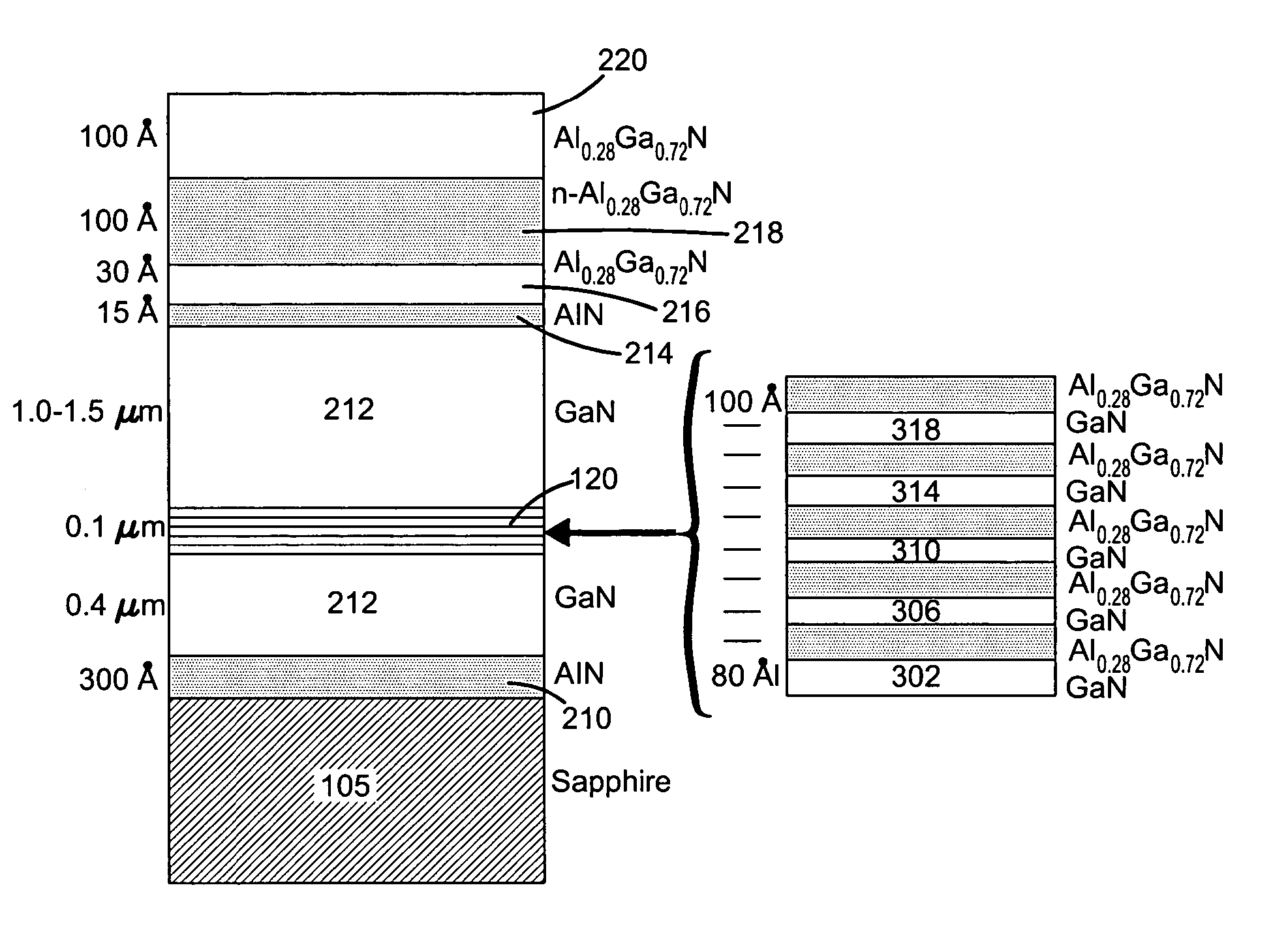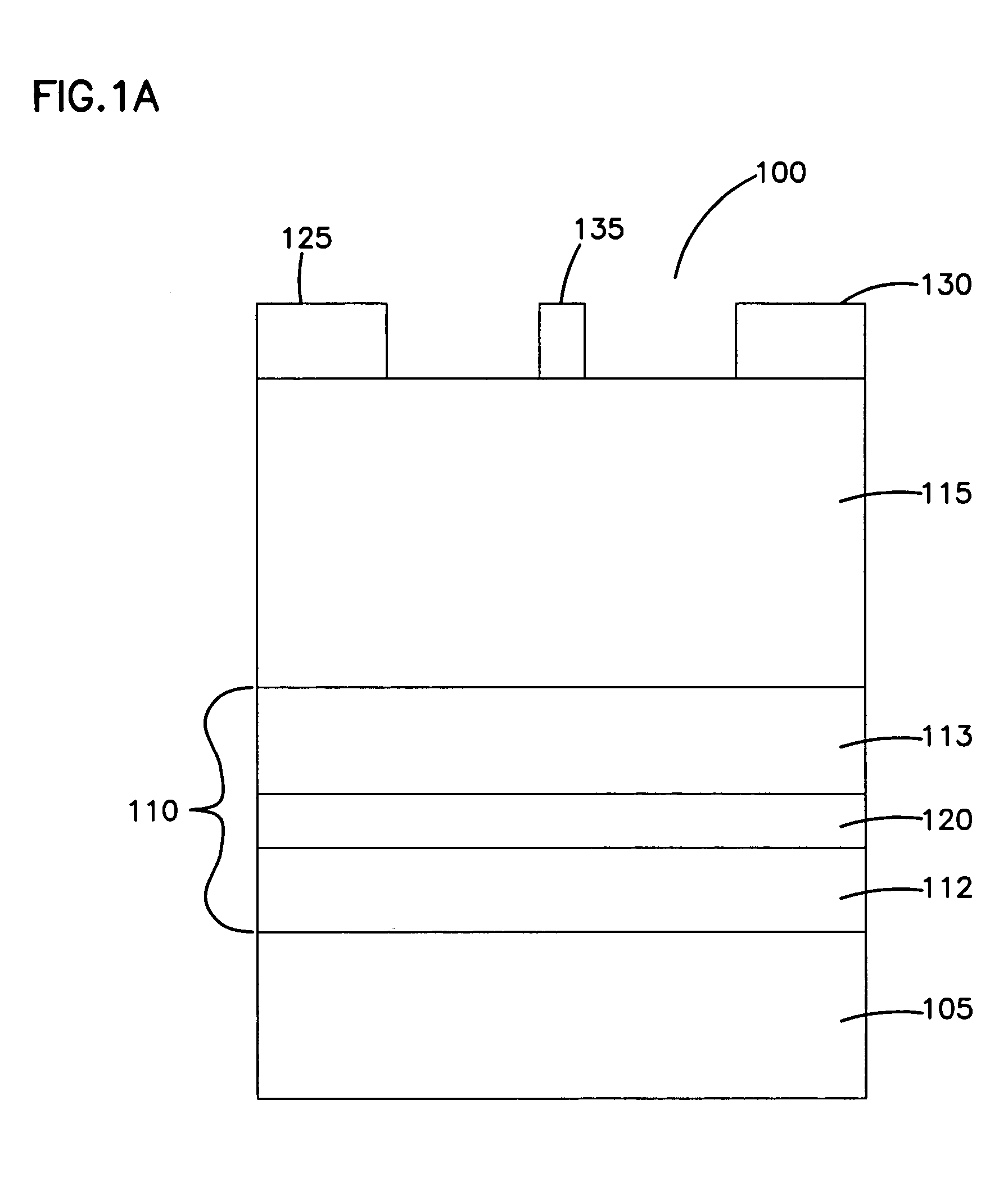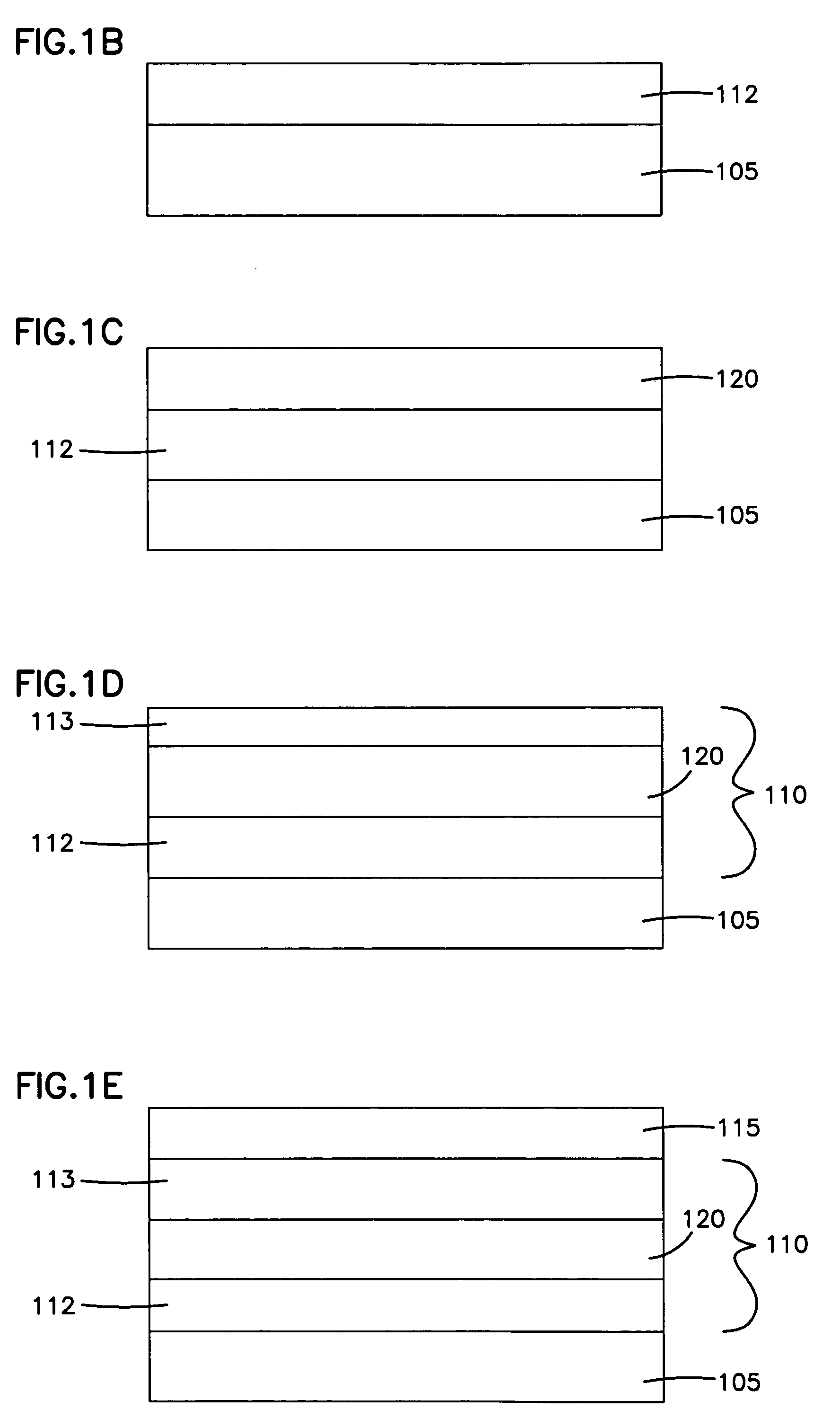Super lattice modification of overlying transistor
a transistor and super lattice technology, applied in the field of wide bandgap semiconductors, can solve the problems of affecting the surface roughness of the surface, and the inability to meet the lattice, so as to reduce the surface mobility of aluminum, reduce the roughness of the surface, and increase the performance of the resulting device
- Summary
- Abstract
- Description
- Claims
- Application Information
AI Technical Summary
Benefits of technology
Problems solved by technology
Method used
Image
Examples
working examples
[0068]The invention will be further illustrated through the following examples.
working example 1
[0069]A device in accordance with the invention was fabricated as follows.
[0070]A degreased and etched (0001) basal plane sapphire substrate (1.25 inch diameter) was loaded on the SiC-coated graphite susceptor of a low-pressure metalorganic chemical vapor deposition (LP-MOCVD) vertical reactor with an inductive RF heater. All growth steps were carried out at 76 Torr using triethyl gallium at a flux of about 2 mg / min, triethyl aluminum at a flow of about 100 μg / min, ammonia at a flow of about 1.5 sl / min, and dilute disilane where necessary.
[0071]A conventional low-temperature (640° C.) buffer layer of AlN of about 300 Å was grown (growth time of about 5 minutes) was followed by high-temperature (˜1000° C.) undoped GaN (0.5 μm grown for about 20 minutes). Next, the superlattice of 5 periods (10 layers) of alternating layers of Al0.02Ga0.98N / GaN (0.1 μm) was deposited without any growth interruption at about 1000° C. Each GaN layer was about 80 Å thick (growth time about 1 minute 30 se...
working example 2
[0072]The device fabricated in Example 1 was then evaluated as follows.
[0073]Several techniques were employed to evaluate the structure including differential interference contrast (DIC) (Nomarski) microscopy, room temperature van der Pauw Hall measurements, high resolution x-ray diffraction (HRXRD), scanning electron microscopy (SEM) with selective etching, atomic force microscopy (AFM), and depletion capacitance-voltage depth profiling.
[0074]All growths showed mirror like flatness when examined using DIC microscopy (results not shown). The mobility and carrier concentration were measured by van der Pauw Hall technique immediately after growth.
[0075]Room temperature Hall effect measurements were made using van der Pauw technique. An increase of 2-DEG mobility from 1200 cm2 / V s (without superlattice) to 1500 cm2 / V s (with superlattice) was obtained with an increase in the carrier density from 1.1 to 1.4×1013 cm−2. The trend likely reflects changes in the planarity of the heterointer...
PUM
 Login to View More
Login to View More Abstract
Description
Claims
Application Information
 Login to View More
Login to View More - R&D
- Intellectual Property
- Life Sciences
- Materials
- Tech Scout
- Unparalleled Data Quality
- Higher Quality Content
- 60% Fewer Hallucinations
Browse by: Latest US Patents, China's latest patents, Technical Efficacy Thesaurus, Application Domain, Technology Topic, Popular Technical Reports.
© 2025 PatSnap. All rights reserved.Legal|Privacy policy|Modern Slavery Act Transparency Statement|Sitemap|About US| Contact US: help@patsnap.com



